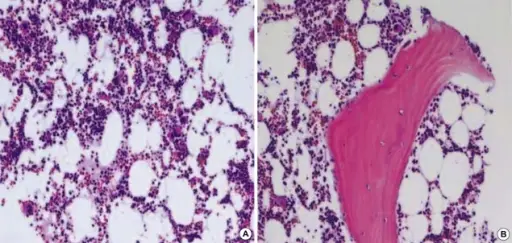Thrombocytopenic purpura is a range of clinical conditions, including thrombocytopenic purpura (TTP) and hemolytic-uremic syndrome (HUS).
What is the Pathology of Thrombocytopenic Purpura?
The pathology of thrombocytopenic purpura is:
-Etiology: The cause of thrombocytopenic purpura is unknown, associated with deficiency of ADAMTS13 enzyme.
-Genes involved: Gene that codes for ADAMTS13.
-Pathogenesis: The sequence of events that lead to thrombocytopenic purpura is unknown, believed to be associated with deficiency of ADAMTS13 enzyme.
-Morphology: The morphology associated with thrombocytopenic purpura shows lesions prominent in the CNS and kidneys.
-Histology: The histology associated with thrombocytopenic purpura shows thrombi platelet-rich and fibrin-poor.
How does Thrombocytopenic Purpura Present?
Patients with thrombocytopenic purpura typically have a female predominance present at an age range of 40 years. The symptoms, features, and clinical findings associated with thrombocytopenic purpura include fever, seizures, hemiplegia, paresthesias, visual disturbance, fatigue, severe bleeding and aphasia.
How is Thrombocytopenic Purpura Diagnosed?
Thrombocytopenic purpura is diagnosed through laboratory studies-platelet count, CBC count, blood smears, coagulation studies, serum bilirubin and lactate dehydrogenase levels.
How is Thrombocytopenic Purpura Treated?
Thrombocytopenic purpura is treated through plasma exchange with fresh frozen plasma. Medical care such as Caplacizumab and Octaplas.
What is the Prognosis of Thrombocytopenic Purpura?
The prognosis of thrombocytopenic purpura is good with ideal diagnosis and treatment.



